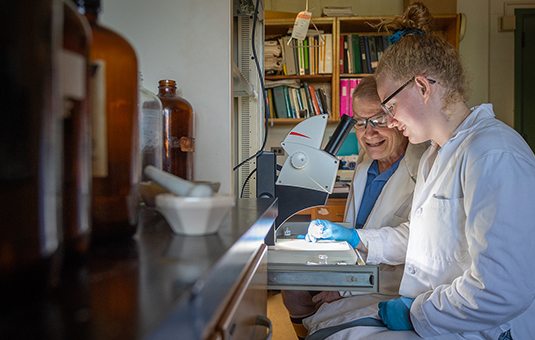Whether you hope to become a physician, pharmacist, or another type of health professional, Clark is committed to helping you find the right path toward YOUR career. Our low student-faculty ratio means you will get to know your professors through small classes and research collaboration. Outside of Clark, Worcester abounds with hospitals and other healthcare settings for opportunities to intern, volunteer, network, job-shadow, and more.

Preparing for a Career in Medicine and Health Care

Planning Your Path
Most medical and other professional schools require you to take specific courses during your undergraduate career, so it’s important to plan your schedule early. From choosing your major to selecting preprofessional courses, Clark’s Prehealth Advising Program is here to help.

Applying to Medical and Professional Schools
Most accredited U.S. medical schools use a centralized online application service, called AMCAS. It takes more time to complete this application than you might imagine, so start early. We also help students with applications to other health professional schools: nursing, physician’s assistant, dentistry, ophthalmology, osteopathy, veterinary programs, and more.

Careers and Outcomes
Clark’s Prehealth Advising Program prepares students to attend medical and other health professional schools. Graduates have gone on to matriculate at some of the top programs in the nation, including Harvard Medical School, University of Pennsylvania School of Veterinary Medicine, and Columbia University College of Dental Medicine.
Events
View All EventsThere are currently no upcoming events scheduled, please check back at a later date.
Invited Speakers
Presentations by invited speakers provide insight into how to prepare for the challenges of the health professions and how to take advantage of the rewards.
Upcoming presentation:
To be announced.
Prehealth Career Advising Program
-
Arthur M. Sackler Sciences Center, S228
950 Main Street
Worcester, MA 01610 - 1-508-793-7119
- 1-508-793-7117
-
Monday through Friday
8 a.m. – noon
